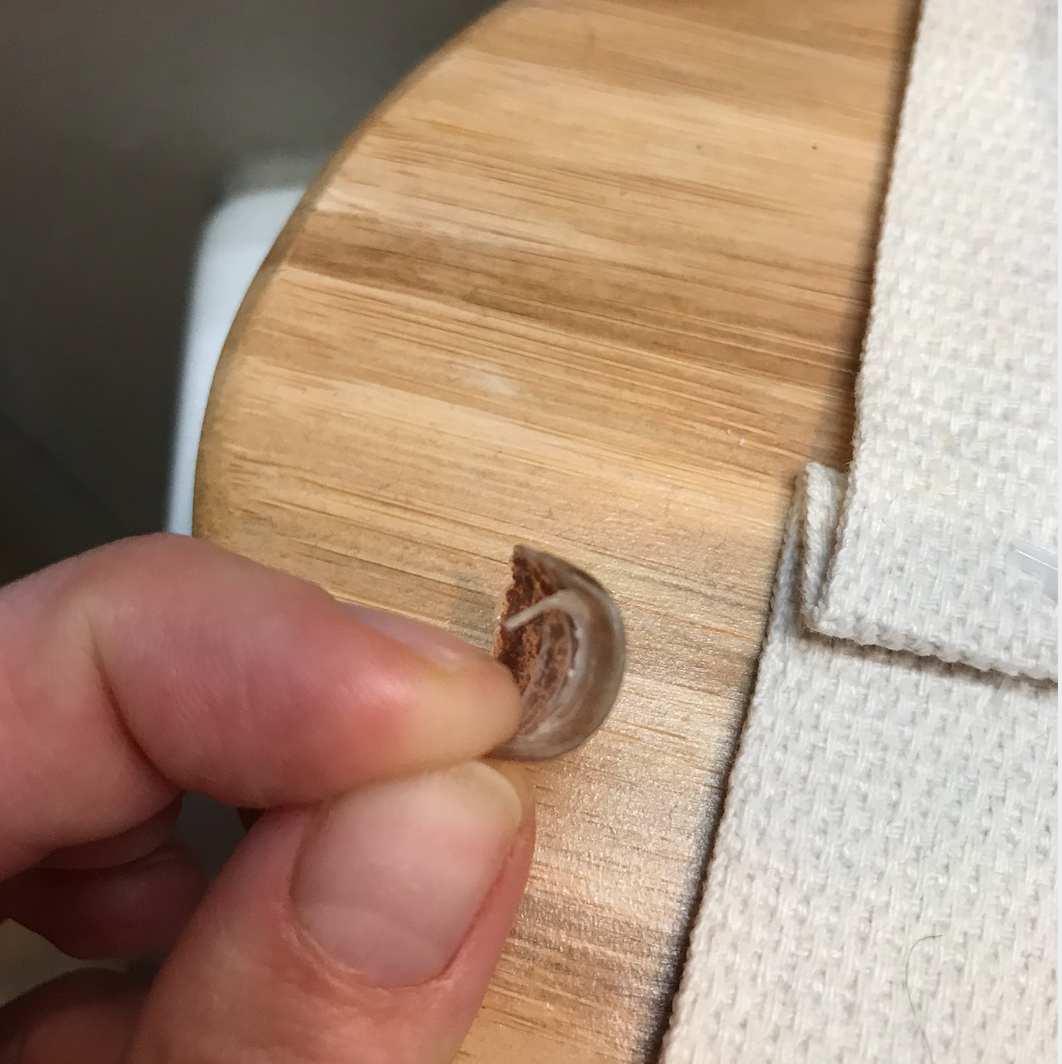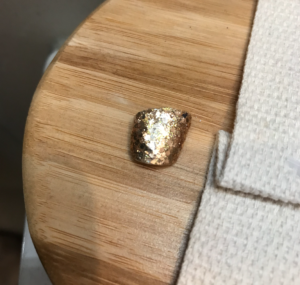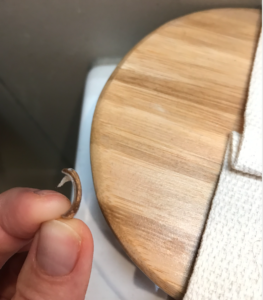My Shellac Came Off And Caused An Ingrown Toenail?
August 29, 2022

 We recently had a patient come in who was experiencing her very first ingrown toenail – and initially, the cause of it was a bit of a mystery. She had relatively flat nails (compared to the typical excessively curved nails we often see with ingrown toenails), her shoes were roomy and spacious at the toe box – she didn’t like shoes that cramped her toes. Her foot posture and gait pattern were also relatively neutral – we didn’t see any excess pronation (rolling inwards) that places more pressure down the inside of the toe with every step that can contribute to an ingrown toenail.
We kept asking questions and investigating… (after all, knowing why an ingrown toenail has occurred helps guide how we treat it and how we help you prevent it from happening again in the future) until our patient remembered something, and reached into her jacket pocket. And this is what she pulled out (image on right).
This is the shellac polish that she had applied at a nail salon two months ago. The polish had done a great job of staying on her toes for that long, but she recalled that about a week ago when she was in bed, she felt like her nail was falling off. Really, it was the shellac that was coming off – and taking some of the outer layers of her toenail with it.
She said when she reached down to feel it, it was barely hanging on by the side of the nail – so she gave it a quick (and somewhat painful) tug to rip it off. And suddenly, everything made sense…
We recently had a patient come in who was experiencing her very first ingrown toenail – and initially, the cause of it was a bit of a mystery. She had relatively flat nails (compared to the typical excessively curved nails we often see with ingrown toenails), her shoes were roomy and spacious at the toe box – she didn’t like shoes that cramped her toes. Her foot posture and gait pattern were also relatively neutral – we didn’t see any excess pronation (rolling inwards) that places more pressure down the inside of the toe with every step that can contribute to an ingrown toenail.
We kept asking questions and investigating… (after all, knowing why an ingrown toenail has occurred helps guide how we treat it and how we help you prevent it from happening again in the future) until our patient remembered something, and reached into her jacket pocket. And this is what she pulled out (image on right).
This is the shellac polish that she had applied at a nail salon two months ago. The polish had done a great job of staying on her toes for that long, but she recalled that about a week ago when she was in bed, she felt like her nail was falling off. Really, it was the shellac that was coming off – and taking some of the outer layers of her toenail with it.
She said when she reached down to feel it, it was barely hanging on by the side of the nail – so she gave it a quick (and somewhat painful) tug to rip it off. And suddenly, everything made sense…
How Did Shellac Cause An Ingrown Toenail?

 In this case, it wasn’t necessarily the Shellac on its own, but how the tough Shellac substance gripped firmly onto the nail and then pulled the surface layers of the nail off, peeling them away until it got down to the side of the nail. Here, it was hanging on, and our patient pulled it off – much like how many people choose to pull the nail as an alternative to using proper nail trimming instruments – a very common cause of ingrown nails.
By pulling the nail off, it left behind a sharp nail spicule down the side of the nail – and it even left a similar sharp spicule of the natural nail that had been pulled off by the shellac – you can see it in the picture below.
When a sharp nail spicule is left behind down the side of the nail, invisible to the naked eye, as the nail naturally grows out, it can grow into the surrounding skin and cause an ingrown toenail. Unfortunately, this tends to get worse as the nail grows, not better.
In this case, it wasn’t necessarily the Shellac on its own, but how the tough Shellac substance gripped firmly onto the nail and then pulled the surface layers of the nail off, peeling them away until it got down to the side of the nail. Here, it was hanging on, and our patient pulled it off – much like how many people choose to pull the nail as an alternative to using proper nail trimming instruments – a very common cause of ingrown nails.
By pulling the nail off, it left behind a sharp nail spicule down the side of the nail – and it even left a similar sharp spicule of the natural nail that had been pulled off by the shellac – you can see it in the picture below.
When a sharp nail spicule is left behind down the side of the nail, invisible to the naked eye, as the nail naturally grows out, it can grow into the surrounding skin and cause an ingrown toenail. Unfortunately, this tends to get worse as the nail grows, not better.

